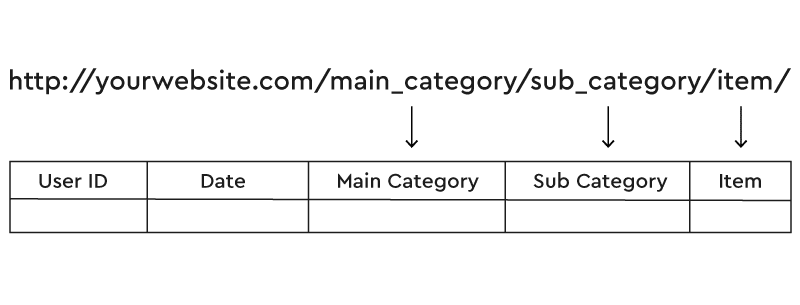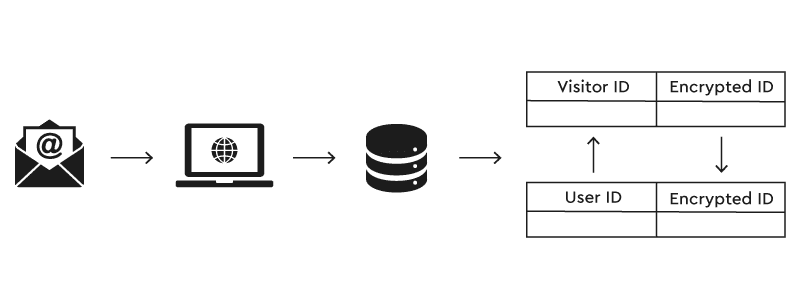
AI and the Retail Marketer’s Future
How AI transforms strategy and processes, driving the adoption of Positionless Marketing
Exclusive Forrester Report on AI in Marketing

Segmenting your users and sending email campaigns based on each segment’s unique characteristics and goals can help you send more relevant and successful emails.
There are many ways you can use data to segment your users. Brands can ask their new subscribers for information such as gender, country, preferences, and other demographic details during signup. They can track post-website activity or measure product behavior (number of purchases, purchase amount, for example.) to define their segments. Using the data from email analytics to leverage segmentation, however, is often overlooked.
Here are a few ways to use email analytics to send higher-quality emails.
Geolocation
Many ESPs today offer geo-location data for open and click events based on the user IP. This data can be beneficial not only to understand your engaged users’ distribution by country, but also for leveraging this to a marketing action based on last location.
Travel companies can use this for “during your trip” campaigns and show relevant content or promotions for local activities in a dynamic way.
E-commerce companies can show relevant items and promotions by your location – Europe might not have the same sales than the US, may feature different products, and other small yet significant differences.

Know Their Devices
Knowing which devices your customers use can also help you to better personalize campaigns.
Some content types can fit specific devices or operating systems, and some can badly “break” the email template.
Know where to put your efforts. Videos, for example, work great on iOS devices. You’ll only be able to see a short gif on Androids, but your computer will most likely show a static image of that video. Consider what you want the recipient to see and how it’ll show up on screen; you might decide to choose another image for that specific device.
You can pull this data from the ESP, usually by an API call.

To enhance brand stickiness, you could also send users who open your emails from their desktop or laptops a CTA asking them to download your mobile app.
Parsing URLs
Although web tracking is commonplace today, email engagement analysis can provide an alternative view and give additional insights into users’ behavior.
For a better understanding as to what readers expect in their emails, parse the URLs users click on and follow their sub-categories to the exact item. From here, you can examine the latest trends and hot products people want from you.
http://yourwebsite.com/main_category/sub_category/item/

Here at Optimove, we can generate a process where we break down every URL and create different attributes for segmentation (country, page name, other demographic data points.). Enterprises can then segment all of the people who clicked on a specific attribute in a certain period. For example, all the users who clicked on the UK during the past four weeks.
Bonus – anonymous email stitching
Many companies today suffer from the inability to connect between activity made by anonymous visitors and registered users. For instance, if users registered once and provided their email, they can browse the site without logging in. Once they register, we receive their cookie ID, and we can then stitch the two together.
Brands may deem customers inactive if they’re browsing in incognito or don’t log in, but of course, that’s not the case. In Optimove, we can make the connection between anonymous visitors and registered visitors.
Here’s how it works:
Step 1: Create a personalization tag containing an encrypted ID of your identified user
Step 2: Add a custom UTM to the links in your email templates
https://your-website.com/product/subproduct/items?utm_cid=[%encrypted_cid_tag%]
Step 3: Loop backtracked visitor ID (usually the cookie ID)
Step 4: Manage mapping table of visitor ID to user ID, based on encrypted ID connection

Next level targeting can begin by examining your email data. By making the most of user-provided information, you could track how they’re navigating your site and which products interest them most. From knowing which devices they’re using to read your mails, to parsing their URLs, dig into the data to continuously get the most out of your communications, and send increasingly impactful mailers.
Exclusive Forrester Report on AI in Marketing
In this proprietary Forrester report, learn how global marketers use AI and Positionless Marketing to streamline workflows and increase relevance.


Jonathan Inbar is a marketing data scientist on Optimove’s Strategic Services team. As a marketing data scientist, Jonathan leverages his extensive experience with building predictive models and generating data-driven marketing insights to consult with clients and help them optimize their CRM strategy and tactics.
Jonathan holds a BSc in Industrial Engineering and Management, specializing in Information Systems, and two specialization certificates in Machine Learning from Duke University and the University of Washington.


